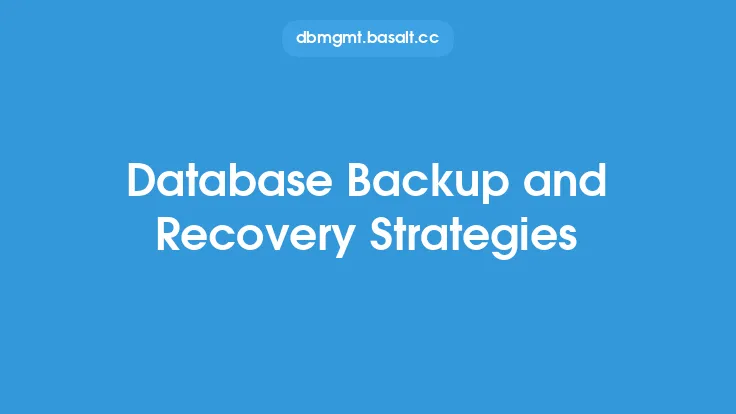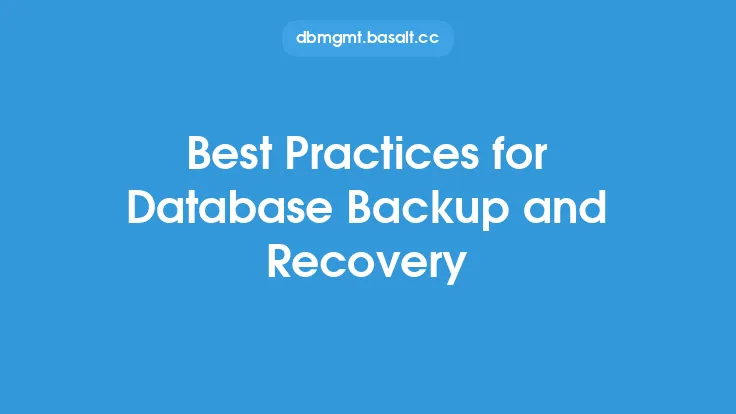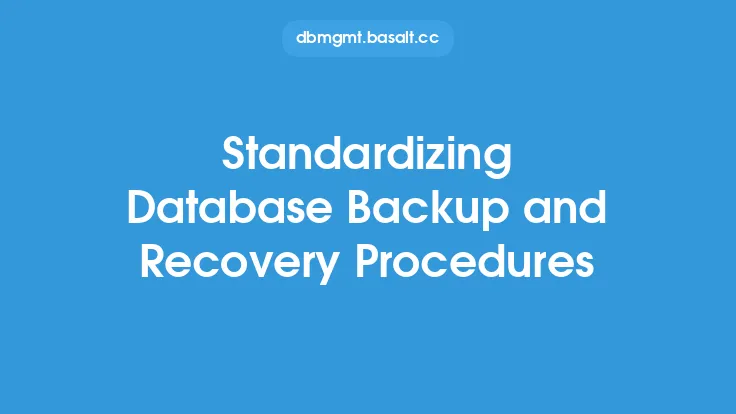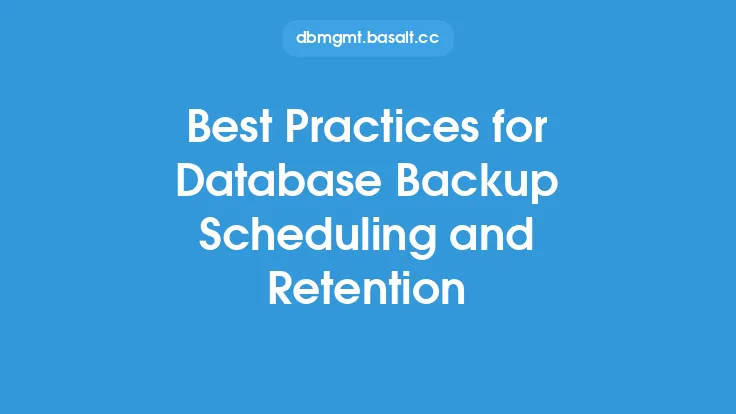Database backup is a critical aspect of data management, and it involves creating copies of data to prevent loss in case of failures or disasters. There are several methods of backing up databases, including full, incremental, and differential backups. Each method has its own advantages and disadvantages, and the choice of method depends on the specific needs of the organization.
Introduction to Database Backup Methods
Database backup methods are designed to ensure that data is protected and can be recovered in case of a failure or disaster. The three main methods of database backup are full, incremental, and differential backups. A full backup involves creating a complete copy of the database, including all data and metadata. An incremental backup involves creating a copy of the data that has changed since the last backup, while a differential backup involves creating a copy of the data that has changed since the last full backup.
Full Database Backups
A full database backup involves creating a complete copy of the database, including all data and metadata. This type of backup is typically performed on a regular basis, such as daily or weekly, and is used to create a baseline for incremental and differential backups. Full backups are the most comprehensive type of backup and provide the highest level of data protection. However, they can be time-consuming and resource-intensive, especially for large databases. Full backups are typically used for databases that are critical to the operation of the business and require the highest level of data protection.
Incremental Database Backups
An incremental database backup involves creating a copy of the data that has changed since the last backup. This type of backup is typically performed on a frequent basis, such as hourly or daily, and is used to capture changes made to the database since the last full or incremental backup. Incremental backups are faster and more efficient than full backups, as they only capture the changes made to the database. However, they require a full backup to be restored, as well as all incremental backups made since the last full backup. Incremental backups are typically used for databases that are subject to frequent changes and require a high level of data protection.
Differential Database Backups
A differential database backup involves creating a copy of the data that has changed since the last full backup. This type of backup is typically performed on a regular basis, such as daily or weekly, and is used to capture changes made to the database since the last full backup. Differential backups are faster and more efficient than full backups, as they only capture the changes made to the database. However, they can be larger than incremental backups, as they capture all changes made since the last full backup. Differential backups are typically used for databases that are subject to frequent changes and require a high level of data protection.
Comparison of Database Backup Methods
The choice of database backup method depends on the specific needs of the organization. Full backups provide the highest level of data protection, but can be time-consuming and resource-intensive. Incremental backups are faster and more efficient, but require a full backup to be restored, as well as all incremental backups made since the last full backup. Differential backups are faster and more efficient than full backups, but can be larger than incremental backups. The following table summarizes the advantages and disadvantages of each method:
| Backup Method | Advantages | Disadvantages |
|---|---|---|
| --- | --- | --- |
| Full Backup | Provides the highest level of data protection | Time-consuming and resource-intensive |
| Incremental Backup | Faster and more efficient than full backups | Requires a full backup to be restored, as well as all incremental backups made since the last full backup |
| Differential Backup | Faster and more efficient than full backups | Can be larger than incremental backups |
Best Practices for Database Backup Methods
The following are best practices for database backup methods:
- Perform full backups on a regular basis, such as daily or weekly
- Perform incremental or differential backups on a frequent basis, such as hourly or daily
- Store backups in a secure location, such as an offsite storage facility or cloud storage
- Test backups regularly to ensure they can be restored successfully
- Consider using a combination of backup methods, such as full and incremental backups, to provide the highest level of data protection
Conclusion
Database backup methods are critical to ensuring the protection and recovery of data in case of failures or disasters. The choice of method depends on the specific needs of the organization, and each method has its own advantages and disadvantages. By understanding the different types of database backup methods, including full, incremental, and differential backups, organizations can choose the best method to meet their needs and ensure the highest level of data protection.





